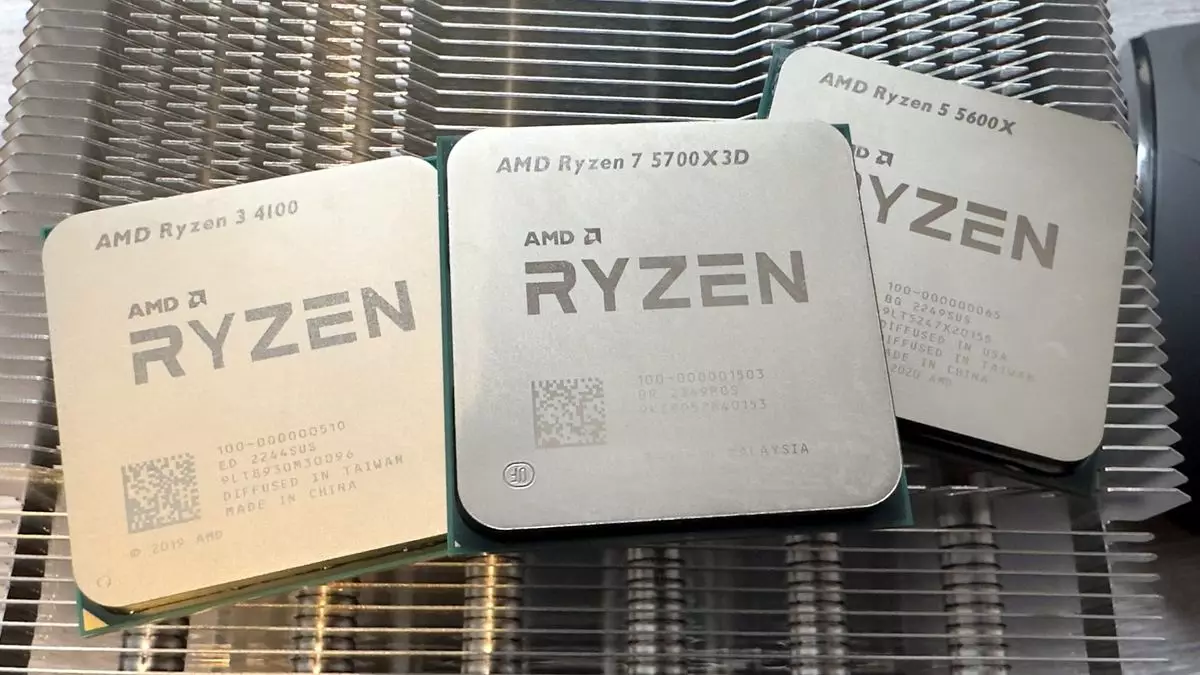AMD has positioned itself as a formidable challenger to Intel, particularly with the advent of its Ryzen processors. While the Ryzen 9000-series chips have generated substantial buzz, UK-based AMD is still actively investing in the aging AM4 platform, which has been a staple for PC enthusiasts and gamers alike. This ambitious strategy reflects AMD’s commitment to provide options for a diverse range of users, from casual gamers to hardcore performance seekers. The potential launch of new members of the Ryzen 5000-series, specifically the Ryzen 5 5600T and 5600XT, indicates that the company is not ready to abandon its successful AM4 architecture.
Recent revelations from tech insiders suggest that AMD may soon unveil the Ryzen 5 5600T and 5600XT processors, as they have appeared on several motherboard manufacturer pages. These releases are particularly intriguing, given that the AM4 platform shows notable longevity, providing a solid base for upgrading existing systems. Previously launched models, like the Ryzen 5 5600X3D, provide evidence that AMD is continuously fine-tuning the 5000-series and pushing performance boundaries. As gamers seek higher frame rates and smoother experiences, adding more options to the AM4 lineup is undoubtedly welcome.
However, there are several layers to these developments that merit a closer examination. While AMD has released performance-enhanced variants like the Ryzen 7 5800XT and Ryzen 9 5900XT, the introduction of the ‘T’ suffix has raised questions about its implications. Historically, ‘T’ indicated lower power consumption; however, recent examples show this distinction has grown hazy. For instance, the Ryzen 5900XT has a similar Thermal Design Power (TDP) rating compared to its predecessor, the 5900X, yet it offers additional cores and improved performance.
Speculation surrounding the specifications of the Ryzen 5 5600T and 5600XT is rife but tempered by the lack of official confirmation. Reports suggest that the 5600XT may have a base clock speed incrementally higher than its predecessor, the 5600X, which could yield valuable performance boosts for gaming applications. Boost clock speeds are particularly vital, as they dictate the peak performance of the processors under load. Historical trends indicate similar refreshes within the Ryzen 5000-series have successfully introduced elevated boost clock settings without substantially increasing power demands.
If AMD can manage to deliver these new CPUs with enhanced clock speeds and maintain an approachable price point, it will create a compelling offering for budget-conscious gamers. A hypothetical scenario where the Ryzen 5 5600T offers a modest $10-15 reduction in price, along with slight performance upgrades, would resonate strongly among the DIY PC building community.
Market Dynamics: Keeping the Budget Gamer in Mind
While current affordable options like the Ryzen 5 5600X, available for around $128, remain viable, any new iterations could significantly elevate the competition in the budget segment. With an aging stock of AM4 processors on the market, AMD’s forward-thinking approach could spark renewed interest and encourage upgrades among users clinging to older systems.
Imagining a scenario where AMD can balance both price and performance with the new 5600-series CPUs could attract a wave of new customers seeking budget solutions without sacrificing efficiency. As the market for PC gaming continues to grow, especially with increasing demand for affordability, AMD’s strategic decisions reflect a commitment to staying relevant and useful to its customer base.
While much rests on rumors and speculation at this point, the forthcoming weeks will be crucial for AMD. With previous refreshes setting a precedent, tech enthusiasts and gamers alike watch closely to see how the 5600T and 5600XT fare in terms of specifications and pricing. As always, patience is a virtue in the tech world, but anticipation for these new processors is palpable.
Ultimately, the path AMD chooses in enhancing the Ryzen 5000-series will significantly impact consumer perceptions and purchasing choices moving forward. Will they continue to fortify the AM4 platform against newer architectures, or will attention turn fully to the innovations of the Ryzen 9000? Only time will tell, but one thing is for certain: the launch of any new processors will capture the attention of both new and seasoned CPU enthusiasts.

